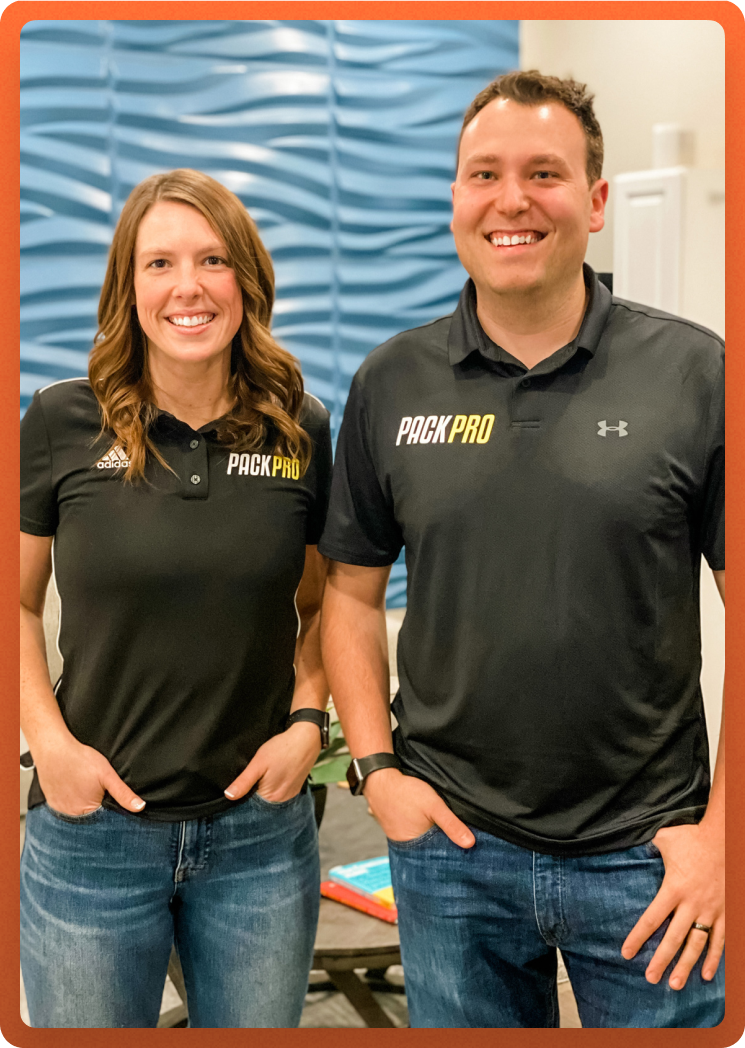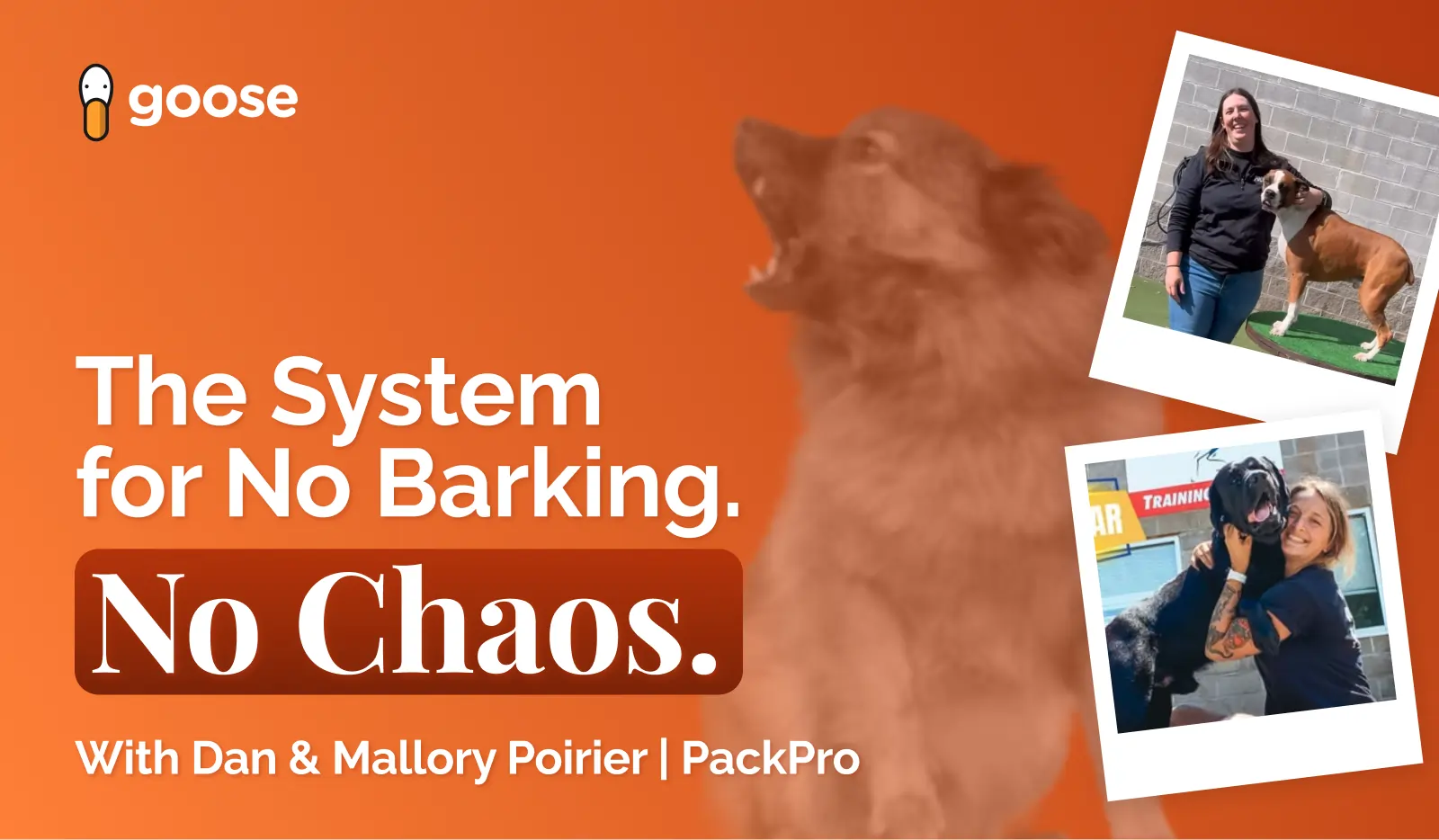The first time I walked into Fetch n’ Catch in Buffalo, I thought something was wrong.
It was quiet.
Not pin-drop silent, but calm. No thunderous barking, no chaos at the gates, no white-noise roar of stressed dogs. For a 25,000 square foot facility that sees 200 to 250 dogs a day, it was almost disorienting.
If you are in pet care, you know that is not normal.
That silence is not an accident. It is the result of years of trial, error, frustration, and a whole lot of stubbornness from Dan and Mallory Poirier, the owners of Fetch n' Catch and the brains behind PackPro.
When I talked with Dan and Mallory, it became clear pretty quickly that none of this happened by accident. Between 2014 and 2017, they pretty much ripped their daycare apart and rebuilt it from scratch. They brought in outside eyes, examined every process, changed how groups were run, tightened intake, and reset what they expected from staff.
Once they came out the other side of that work, they realized they had built a system that could help a lot more people than just themselves. Here are the lessons learned.

Dan & Mallory Poirier founded PackPro from the lessons learned managing their first business Fetch n' Catch.
Lesson 1: Loudness Is a Symptom
When they visit a facility, they often plan to talk about SOPs, staff accountability, and all the big operational stuff. But as soon as they walk into a daycare with multiple loud playgroups, priorities shift.
“If it is thunderous barking, we have to start there. How can we think about anything right now? How can we expect staff to absorb what we are telling them? This is not an environment that is conducive to learning or development.” - Mallory Poirier
At Fetch n' Catch, the “wow” moment for visitors is not a fancy lobby or a clever mural. It is the quiet. It is proof that the emotional state of the dogs under their care is under control, that staff know how to manage stimulation, and that the environment is not driving everyone, human and canine, up the wall.
If you want a simple, honest health check of your daycare operations, start with your ears.
If you cannot hold a normal-volume conversation in your playrooms, you do not have an operational problem hiding behind the scenes. You have it right in front of you.
Lesson 2: Group Daycare Is Not For Every Dog
According to Dan and Mallory, about half of dogs are not good candidates for classic group daycare.
Not because they are “bad dogs.” Because the environment is incredibly unnatural.
Think about it from a dog’s perspective. You are in a room with twenty unrelated dogs, off leash, in a novel environment, for eight to ten hours. That is not “pack behavior.” That is a weird human invention.
The remarkable thing is not that half of dogs struggle with that. The remarkable thing is that half of them handle it just fine.
.png)
Calm is possible, even in a busy daycare, when the environment is managed intentionally
Fetch n' Catch built an entire second daycare concept around that insight. They run:
- Traditional group play in one building
- “Day camp” or enrichment daycare in another
.png)
Daycare looks different for each pet, resulting in a calmer (and quieter environment).
Day camp is for dogs that are too intense for group, do not like other dogs, are intact, or just get overwhelmed. They get one-to-one activities, structured social sessions with carefully selected buddies, and a much different pace.
For many facilities, that enrichment-style offering is sitting right in front of them as both a revenue and welfare opportunity. But there is a catch.
If you treat enrichment as the “more expensive consolation prize” for dogs that fail group daycare, clients will feel punished.
Fetch n' Catch deliberately frames it differently from the very first evaluation.
The message is not:
“We are going to test your dog for group play. If they fail, you have to go to the more expensive option across the driveway.”

The message is:
“We are going to evaluate your dog to decide which type of daycare is the best fit for them.”

That is a huge difference.
The dog has not failed. The dog simply does better in a different environment. Just like humans, some dogs thrive in a crowd and some do better in smaller groups or one-to-one.
Lesson 3: Manage Intake To Manage Your Business
Operationally, intake is the choke point where you protect your playgroups, your staff, and your sanity. It is where you decide:
- Are we letting in dogs with separation anxiety who will bark all day?
- Are we sticking 50 dogs in one giant group because it is convenient?
- Are we throwing in toy triggers and then acting surprised when arousal spikes?
Fixing your intake process is one of the most important levers in managing your business, and PackPro bakes that thinking into how they train other facilities.
Lesson 4: Training Should Not Depend On How Much Coffee Your Manager Had
Before PackPro, Dan and Mallory were doing what most of us do.
You hire a new person. You put them in shadow mode. A supervisor talks at them for two weeks, covers body language, gate control, basic safety, client interactions, and then hopes something sticks.
If that employee quits after 14 days, you start over from zero. Again. And again. And again.
That is brutal on your leadership team.
PackPro exists because they got tired of talking themselves hoarse and then losing people.
Today, their training program is:
 10 to 12 hours of structured online content
10 to 12 hours of structured online content
 Filmed inside a real, busy facility
Filmed inside a real, busy facility
 Broken into courses like body language, group management, first aid and CPR, customer service, new dog evaluations, and soon leadership and staff management
Broken into courses like body language, group management, first aid and CPR, customer service, new dog evaluations, and soon leadership and staff management
 Supported by quizzes and workbooks
Supported by quizzes and workbooks
Most new hires can complete the core courses in one to two weeks, depending on hours. By the time they are in the room, they have at least a shared language for what they are seeing.
Every facility will always need its own local SOPs: what chemicals you use, how your POS system works, exactly what you do when a fight breaks out. PackPro does not try to replace that.
It lays the foundation so your managers are not repeating “Dog 101” for the hundredth time.
.png)
In addition to online training classes, PackPro offers in-person masterclasses and hands-on tune-ups.
Lesson 5: You Have To Be Willing To Change If You Want Things To Change
The facilities that struggle the most are the ones that say:
“I want quieter groups, happier staff, and fewer injuries, but I do not really want to change anything.”
There is no polite way to say this. If you are not willing to change, no consultant, course, or tool can save you.
On the other hand, if you are willing to tweak intake, change expectations for staff, rework how your day starts, and maybe retire a few sacred cows, small changes can add up fast.
Bringing It All Together
If you are running a pet care facility today and you feel like the business is running you, not the other way around, you are not alone.
You can build a culture where change is normal and staff are set up to succeed.
PackPro grew out of a selfish need to fix their own problems. That is exactly why it works. It is not theory. It is the playbook they used to turn a loud, stressful operation into something that feels more like a well-oiled machine.


.png)
.png)


.png)

.svg)




